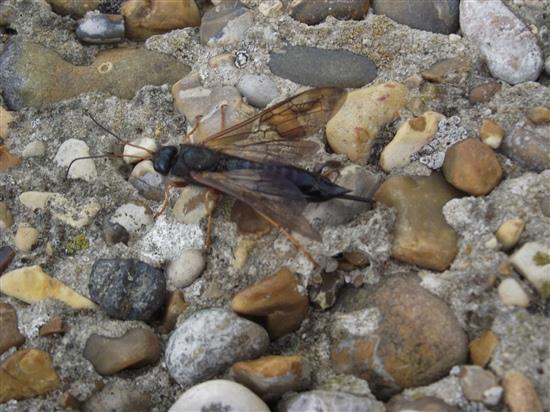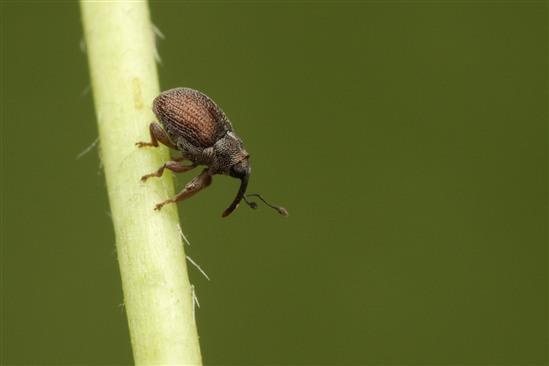
2 minute read
Two New Records for RSPB Minsmere Ian Barthorpe
We've been celebrating Minsmere's 70th anniversary during 2017 by highlighting the incredible variety of wildlife to be found here: about 5700 species, including about 340 birds, 1200 fungi, 1100 moths, etc. Now, two new insects have been added to the reserve list. One was found during the May 2017 Bioblitz, but its identity has only just been confirmed. The other was found by one of our younger visitors. During the Bioblitz, we were pleased to welcome two of the RSPB's Ecologists from our headquarters in Bedfordshire. Mark and Bex spent a day surveying various parts of the reserve on the hunt for invertebrates, specialising particularly in beetles and wasps and bees. One of the highlights of their survey was a beautiful, tiny pseudoscorpion called a marram grass chelifer (Dactylochelifer latreillii) that they found in the dunes. Mark has now confirmed that one of the other species found that day was a first for the reserve. This was a lovely little weevil that goes by the name of Ceutorhynchus pumilio. C. pumilio feeds on shepherd's cress, a member of the cabbage family. The foodplant is uncommon and the weevil is very scarce. There are good populations at Dungeness, in Breckland, and the Thames Basin heaths, but that is about it. Mark has looked for it several times on the shepherd's cress along the path to the beach, but never found it there. This one was found on an abundance of closely related thale cress in an exclosure where the rare red-tipped cudweed grows, quite close to Bittern Hide. The second new find was a much bigger, more distinctive insect. It was found on 16 July by my son, Thomas, age 8. We were enjoying a Sunday morning stroll around the Scrape, and decided to follow the upper path through the dunes north of the sluice, when Thomas stopped and asked me what the insect was that was resting on one of the WW2 concrete tank traps.
My first impressions were that it looked rather like a horntail, or wood wasp, but that species has wasp-like colours. This one was a purple-black insect with brown wings and bright yellow legs. A quick internet search came up with Sirex juvencus or steely-blue wood wasp, a close relative of the horntail. As its name suggests, its larvae bore into tree trunks, so it can be a pest species in parts of its range, which stretches as far as eastern Russia. However, wood-wasps are not true wasps, despite their apparent similarity. They are, in fact, a species of sawfly. Thomas's surprise find just proves how you don't need to be an expert to spot something interesting, or even to add to our knowledge of our wildlife.

Steely-blue wood wasp Sirex juvencus. Photo courtesy of Ian Barthorpe
To read Ian’s blog, visit RSPB >






